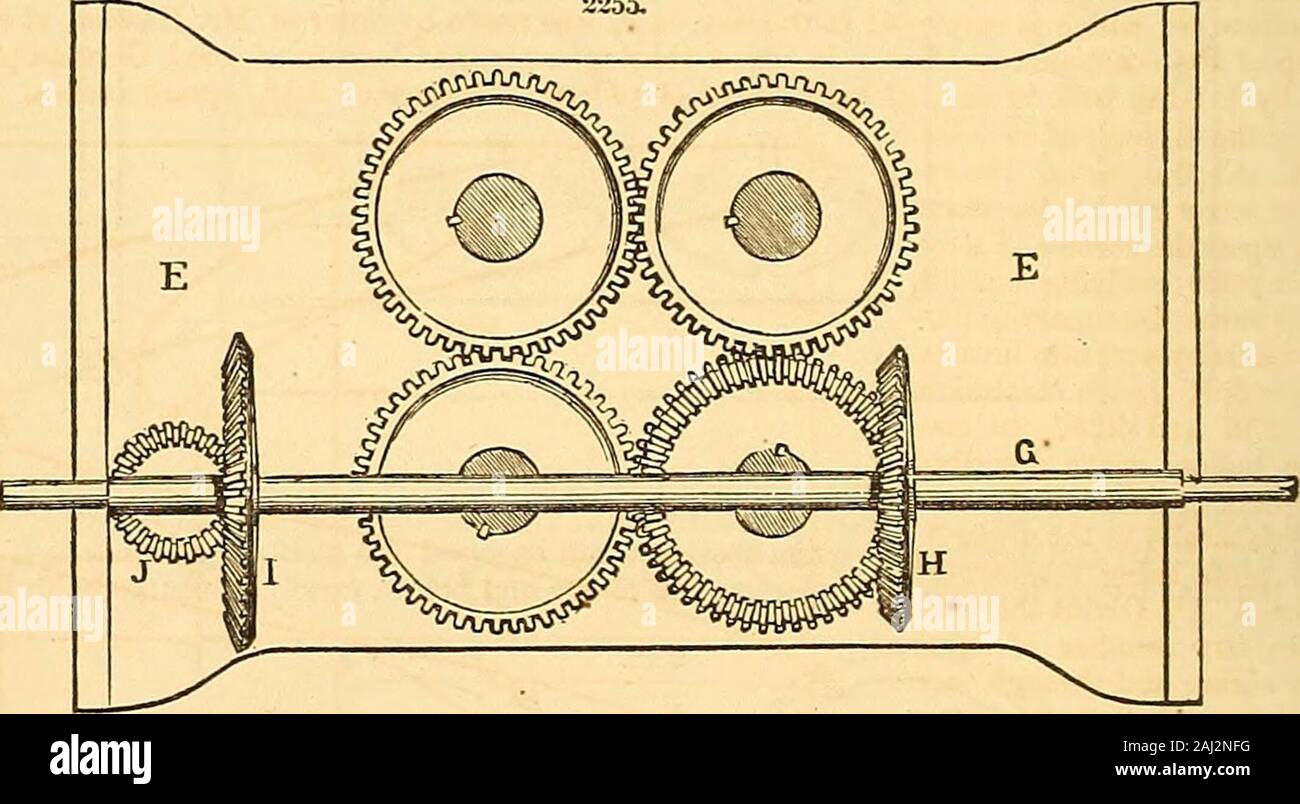Appleton's dictionary of machines, mechanics, engine-work, and engineering . f the machine and moves A endwise as it revolves, to wind tinheddles, as they are made spirally on the beams, q is the smooth axis of A, on which the beam slides,moved by the screw on the guide-rods rr. Q Q are rods that may be inserted in grooves in A. Thesemi-diameter of A must be of the length of the heddles. After the number of heddles for a harnesshave b5en made, grooved pieces may be slipped over Q and glued upon them to embrace the twistedstrands, or any other mode may be adopted. The shipper connecting-rod h,

Image details
Contributor:
The Reading Room / Alamy Stock PhotoImage ID:
2AJ2NFGFile size:
7.2 MB (294.1 KB Compressed download)Releases:
Model - no | Property - noDo I need a release?Dimensions:
2133 x 1172 px | 36.1 x 19.8 cm | 14.2 x 7.8 inches | 150dpiMore information:
This image is a public domain image, which means either that copyright has expired in the image or the copyright holder has waived their copyright. Alamy charges you a fee for access to the high resolution copy of the image.
This image could have imperfections as it’s either historical or reportage.
Appleton's dictionary of machines, mechanics, engine-work, and engineering . f the machine and moves A endwise as it revolves, to wind tinheddles, as they are made spirally on the beams, q is the smooth axis of A, on which the beam slides, moved by the screw on the guide-rods rr. Q Q are rods that may be inserted in grooves in A. Thesemi-diameter of A must be of the length of the heddles. After the number of heddles for a harnesshave b5en made, grooved pieces may be slipped over Q and glued upon them to embrace the twistedstrands, or any other mode may be adopted. The shipper connecting-rod h, (which looks like an n, )Figs. 2252 and 2253, has a lunge-joint t, to allow it to be lifted from the shipper g. The small bevel-wheel J, on the shaft K, is one-third of the diameter of the driving-wheels, when there are three spindleson the table, and therefore makes the changes of the spindles in the recesses in one revolution of therevolving spool-tables. If there were four spindles in the table, the wheel J would be one-fourth thediameter of the driving-wheel, Ac. 2255.. To explain its operation, Fig. 2251 exhibits a different arrangement of mechanical parts from the sec-tion views, but they are just the mechanical equivalents to accomplish the same thing. Heddle orharness making is the formation of eyes by two cords being knotted together. These eyes must beformed at regular distances on the harness. This machine forms two cords by B B, revolving and twist-ing the yarn on the three spindles, one by each table revolving, the cord winding at the same time as itis twisted on the beam A. Now to form four eyes on the heddles every revolution of the beam, look at Fig. 2253. If the strands that make the two cords were interlocked at certain periods, eighttimes during the revolution of A, that four eyes would be formed by the strands of the two cords beingthus at certain points braided into one another. This is the way this machine does its work, and thiscan be done by the forked lev